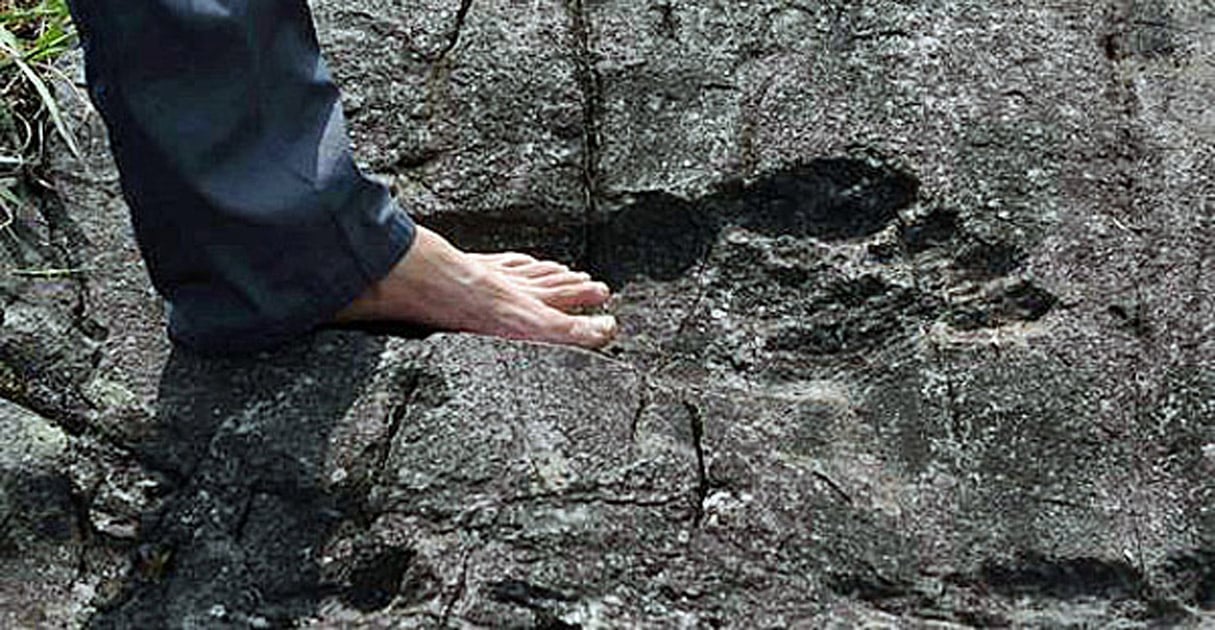Stories and tales about gigantic beings inhabiting the Earth occur in almost all ancient cultures and civilizations. From the Indo-Europeans, to the Greeks, to the Christian Bible, tales of giants have been passed down from generation to generation and these stories still exist in modern day. There has never been any concrete evidence to prove the existence of giants, that is unless you believe the giant footprints that have been found across the globe. Multiple giant footprints have been discovered and are thought to be millions if not billions of years old. To the locals where these footprints can be found they are known as “the footprints of god.” Could the history books and what we know of evolution be wrong?
The Pingyan Giant Footprint
In August 2016, a giant human-shaped footprint was discovered by a group of photographers in Pingyan village in Guizhou, the southwestern province of China. By the following month numerous websites has published similar stories that contributed to the believability of the account of the giant footprint. The footprint was said to be 57 cm long, 20 cm wide, and 3 cm deep. Found fossilized in rock, the footprint was dated back to the prehistoric era. Considering that the average foot size of a man is 18 cm, and the average for a woman is 16.5 cm, this discovery would be monumental and leave historians and scientists alike questioning what we know of human history and evolution.
6 JUNE, 2020 - 14:02 VERONICA PARKES
Stories and tales about gigantic beings inhabiting the Earth occur in almost all ancient cultures and civilizations. From the Indo-Europeans, to the Greeks, to the Christian Bible, tales of giants have been passed down from generation to generation and these stories still exist in modern day. There has never been any concrete evidence to prove the existence of giants, that is unless you believe the giant footprints that have been found across the globe. Multiple giant footprints have been discovered and are thought to be millions if not billions of years old. To the locals where these footprints can be found they are known as “the footprints of god.” Could the history books and what we know of evolution be wrong?
The Pingyan Giant Footprint
In August 2016, a giant human-shaped footprint was discovered by a group of photographers in Pingyan village in Guizhou, the southwestern province of China. By the following month numerous websites has published similar stories that contributed to the believability of the account of the giant footprint. The footprint was said to be 57 cm long, 20 cm wide, and 3 cm deep. Found fossilized in rock, the footprint was dated back to the prehistoric era. Considering that the average foot size of a man is 18 cm, and the average for a woman is 16.5 cm, this discovery would be monumental and leave historians and scientists alike questioning what we know of human history and evolution.




No comments:
Post a Comment